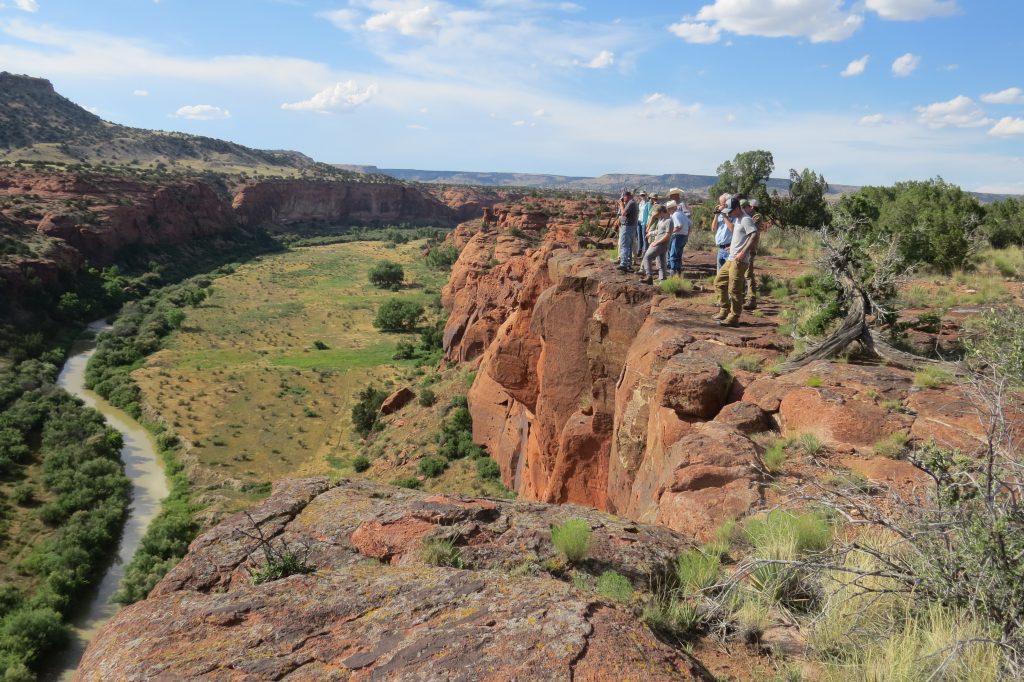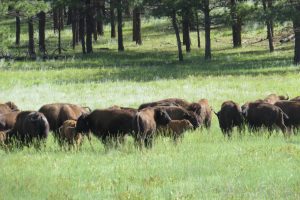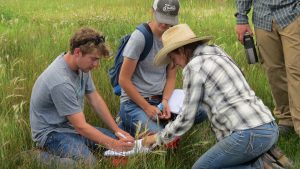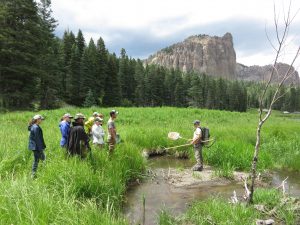
Science and Ranching: New Collaborations Supporting Ecosystem Stewardship in the Rocky Mountain West
By Paul Evangelista and Bill Romme
Dr. Paul Evangelista is a Research Ecologist at NREL and Assistant Professor in the Department of Ecosystem Science and Sustainability (ESS). Dr. Bill Romme is a Senior Scientist at NREL and Professor Emeritus in the Department of Forest and Rangeland Stewardship.

Ranching in the Rocky Mountain West does not always reflect the images most of us have of cowboys on horseback driving large herds of cattle across the open range. Although many ranches in the west continue to include livestock production in their day-to-day operations, raising cattle is only part of ranching today. Forestry, hunting and fishing, renewable energy, carbon credits and ecotourism are only a few of the revenue generating activities that keep ranching profitable. At the same time, ranchers are, and have been for hundreds of years, the stewards of the land. Ranch lands provide habitat for thousands of species of wild plants and animals; they protect key watersheds, as well as the open spaces and scenic vistas that define western landscapes; and they sustain rural communities and agricultural livelihoods.
 In Colorado alone, there are an estimated 33,800 farms and ranches covering 31.8 million acres – nearly half the area of the state. Yet these working landscapes are rarely included in scientific research that can support management, conservation and sustainability of natural resource. With the increasing threats of catastrophic wildfires, forest insect epidemics, invasive species, and climate change, ranchers are facing new challenges to their livelihoods every day.
In Colorado alone, there are an estimated 33,800 farms and ranches covering 31.8 million acres – nearly half the area of the state. Yet these working landscapes are rarely included in scientific research that can support management, conservation and sustainability of natural resource. With the increasing threats of catastrophic wildfires, forest insect epidemics, invasive species, and climate change, ranchers are facing new challenges to their livelihoods every day.
As part of the Western Ranch Management and Ecosystem Stewardship Program recently developed in the Warner College of Natural Resources, scientists and students at the NREL are leading new research initiatives to help ranchers make informed management decisions. The research initiatives give students the opportunity to lead or participate in small-scale research projects designed to support the ranching community. Each project is overseen by a research scientist at NREL in collaboration with one or more ranches. Research projects are generally, but not limited to, detecting change in response to management practices or natural events. For example, students at the NREL may examine how different grazing practices affect soil nutrients through lab analyses, use camera trapping to conduct wildlife inventories, or map invasive species with satellite remote sensing.
 Students are hired as research assistants and play a central role in the study design, data collection, analyses and reporting of results. This not only gives the students hands-on experience in applied research, but also helps their professional development, creates networking opportunities and advances their career goals. Ranchers in return, gain valuable information on the effectiveness of management practices,
Students are hired as research assistants and play a central role in the study design, data collection, analyses and reporting of results. This not only gives the students hands-on experience in applied research, but also helps their professional development, creates networking opportunities and advances their career goals. Ranchers in return, gain valuable information on the effectiveness of management practices,  impacts of natural events, and opportunities to further the economic and ecological sustainability of their operations. The program is unique in that it is entirely funded through the generous donations of individuals, foundations and conservation organizations, and small grants from state and federal agencies. If you would like more information on the program, how to participate or donate, please contact Paul Evangelista at (970) 491-2302 or email to paul.evangelista@colostate.edu.
impacts of natural events, and opportunities to further the economic and ecological sustainability of their operations. The program is unique in that it is entirely funded through the generous donations of individuals, foundations and conservation organizations, and small grants from state and federal agencies. If you would like more information on the program, how to participate or donate, please contact Paul Evangelista at (970) 491-2302 or email to paul.evangelista@colostate.edu.